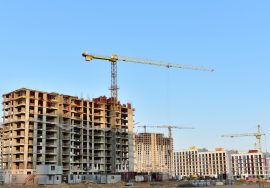
Renewable Energy Integration in Construction Projects
Renewable Energy Integration in Construction for a Sustainable Future
As sustainable development becomes a global priority, renewable energy integration in construction is transforming the way buildings are designed, operated, and maintained. By incorporating clean energy technologies such as solar, wind, and geothermal systems, builders can reduce carbon emissions, cut energy costs, and create long-lasting eco-friendly structures. Today, renewable energy integration in construction plays a vital role in shaping smart, resilient, and environmentally responsible cities.
Why Renewable Energy Integration in Construction Matters
The construction industry contributes significantly to global energy consumption. Traditional buildings rely heavily on fossil fuels for heating, cooling, and power supply. By prioritising renewable energy integration in construction, developers can replace harmful energy sources with sustainable alternatives that reduce environmental impact and meet global climate goals.
This transition not only supports carbon reduction but also enhances energy independence and long-term operational efficiency.
Key Types of Renewable Energy Used in Construction
1. Solar Power Systems
Solar panels and solar rooftops are the most popular form of renewable energy integration in construction. They convert sunlight into clean electricity and reduce dependency on grid power. Solar energy is especially effective in India, where abundant sunlight allows buildings to operate efficiently throughout the year.
2. Wind Energy Solutions
Small-scale wind turbines can be integrated into building designs, particularly in open or coastal regions. While not as common as solar, they provide an excellent supplementary energy source.
3. Geothermal Heating and Cooling
Geothermal technology uses the earth’s natural temperature to regulate indoor climate. As part of renewable energy in construction, geothermal systems significantly reduce heating and cooling costs while maintaining consistent indoor comfort.
4. Biomass Energy
Biomass systems utilise organic waste to produce heat or electricity. They are suitable for eco-friendly projects focused on waste reduction and energy efficiency.
For detailed information on India’s renewable energy policies, you can refer to the Ministry of New and Renewable Energy (MNRE).
Benefits of Renewable Energy Integration in Construction
Reduced Environmental Impact
Buildings that adopt renewable energy in construction emit far fewer greenhouse gases. This contributes to cleaner air, healthier environments, and global efforts toward climate stability.
H3: Lower Energy Costs
Although renewable systems may require initial investment, they drastically reduce long-term electricity expenses. Solar and geothermal systems, in particular, offer excellent payback periods.
Enhanced Building Performance
With renewable systems in place, buildings can maintain stable temperatures, uninterrupted power, and improved energy efficiency.
Increased Property Value
Projects featuring renewable energy in construction are more attractive to eco-conscious buyers and investors. They often achieve higher ratings in green building certifications like IGBC and GRIHA.
How Renewable Energy Integration in Construction Supports Smart Cities
India’s Smart Cities Mission emphasises cleaner, resilient, and energy-efficient infrastructure. Renewable energy in construction plays a central role in achieving these goals by:
-
Improving resource efficiency
-
Reducing energy grid load
-
Supporting zero-energy and net-positive building designs
-
Enhancing sustainability in urban planning
By embracing renewable technologies, India is moving toward self-sustaining and climate-resilient urban ecosystems.

Best Practices for Integrating Renewable Energy in Construction
1. Early-Stage Planning
Integrating renewable energy during the design phase allows architects to optimise building orientation, roof space, and ventilation.
2. Hybrid Energy Solutions
Combining solar, wind, and energy-efficient systems maximises overall performance and reliability.
3. Use of Building Information Modelling (BIM)
BIM tools support accurate planning, simulation, and performance analysis for renewable energy integration in construction.
4. Professional Consultation
Builders and project owners can seek expert guidance to select suitable renewable technologies.
Final Thoughts
Renewable energy integration in construction is a powerful step toward a cleaner and more energy-efficient future. By adopting solar power, geothermal systems, wind energy, and biomass solutions, buildings can operate sustainably while reducing carbon emissions and long-term costs. As the construction sector evolves, renewable energy will remain a cornerstone of modern architecture and green development.
Read more related articles to enhance your knowledge and make informed decisions
Cost-Effective Modular Construction: Fast, and Sustainable Building Solutions
Smart Modular Buildings: Innovative, Efficient, and Sustainable Construction








